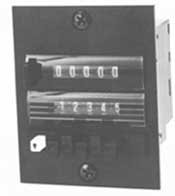Four Basic Pneumatic Control Circuits
Basic circuits within pneumatic control systems often have four styles. Knowing the differences between each type ensures that you purchase and use pneumatic controls and pneumatic valves ideal for applications and environments.
Flow Amplification – a cylinder with a large capacity requires a significant airflow, which can be dangerous to users when not properly dealt with. It is never advised to manually operate pneumatic directional control valves rated for a large flow capacity because it is unsafe. Ideally, you will operate small control valves used to operate control systems with large flow capacities. Flow amplification is used to increase the safety of operators significantly.
Signal Inversion – It is possible to switch pneumatic control valves. As a result, at any given time, the pressure outputs of the control valve are exactly the opposite of the control valve. For instance, when operating a control valve, a valve stops producing pressure output. As operations cease and the valve is returned to its original position, the pneumatic valve begins to resume its original output.
Memory Function – memory is a basic function used to keep components at the desired state (until signals change). During the momentary operation of a control valve, signal outputs are set on a 5/2 directional control valve). Signals remain in that position until another signal is generated, replacing the existing one.
Pneumatic Controls
Delay Function – delay circuits within pneumatic control systems delay the following control valve's operating time. The operating principle involves the use of an orifice as a means to slow down airflow and to increase control of pneumatic operations.
Related Reading
- How do Pneumatic Valves Work
Most valves work similarly. A pneumatic control system holds pressurized air within a diaphragm or a reservoir.
- Increasing the Efficiency of Pneumatic Valve and Control Systems
- A Review of Pneumatic Control Systems


- Ellis/Kuhnke Controls
132 Lewis Street Unit A-2, Eatontown, N.J. 07724
Phone: 1-800-221-0714
Fax: 732-291-8154
Email: Info@ekci.com
- Home Pneumatic Controls Technical Info CAD Drawings Contact Us Pneumatic Timers Blog Site Map
